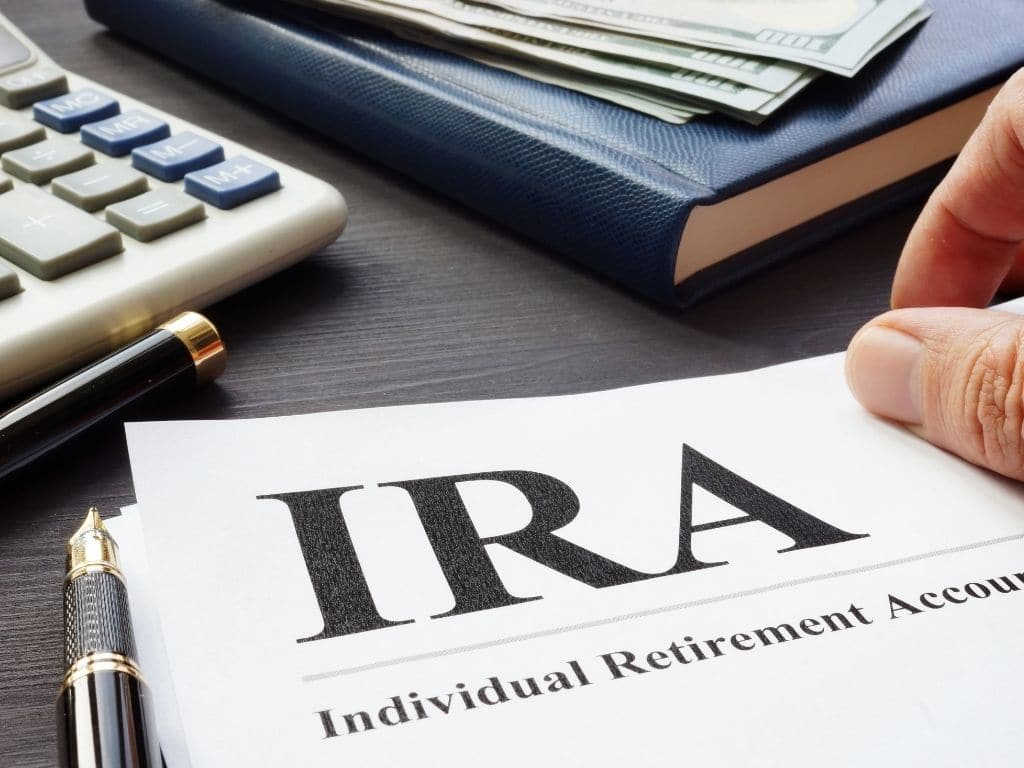What Is a Self-Directed IRA for Real Estate?
Many Americans think of IRAs and immediately associate them with the stock market. In many cases, these types of IRAs are volatile, and can even lose money in some instances. However, what a lot of people don’t realize is that they have the option of a self-directed IRA (SDIRA) as well.
A self-directed IRA allows you to enjoy the same tax benefits as a normal IRA, but you have much more flexibility in terms of what you want your IRA funds to be invested in.
For example, you can choose to invest in commercial real estate, real estate options, promissory notes, tax lien certificates, limited partnerships, LLCs, Sub-C corporations, and some types of precious metals, in addition to the normal stock investment options of a regular IRA. In this article, we’ll be focusing specifically on the self-directed IRA as it applies to real estate investments.

7 Self-Directed IRA Real Estate Rules
There are seven main rules for a self-directed IRA:
1. Property can’t be owned by you.
You are not allowed to use your SDIRA funds to purchase property that you already own, or that is owned by a “disqualified person.”
2. You can’t have indirect benefits.
You may not indirectly benefit from a property that is owned by your SDIRA. For instance, you personally would not be allowed to rent any part of a property that your SDIRA owns, because you would essentially be paying rent to yourself.
3. Property must be uniquely titled.
SDIRA investment properties must be uniquely titled, since you and your SDIRA are considered separate entities. All investment properties must be accurately titled in the name of the custodian of your SDIRA for your benefit.
4. Property can be purchased with an SDIRA in combination with other funds.
Your SDIRA funds can be combined with other funds to purchase real estate. Partnerships and undivided interest can also be used.
5. Expenses must be paid out of the SDIRA.
Any expenses incurred by the ownership of a SDIRA investment property must be paid from the SDIRA, such as utility bills, maintenance fees, renovations, property taxes, building association fees, and so forth.
6. Generated rental income must be paid to your SDIRA.
Any income that is generated by property owned by your SDIRA must be paid directly to your IRA, such as rental property income, sale revenue, and so forth.
Self-Directed IRA Real Estate Examples
Let’s take a look at what a typical SDIRA real estate investment process might look like.
Susan has $250,000 in a Roth IRA at her bank. She is interested in investing in real estate, but her bank that currently serves as her IRA custodian does not allow for real estate investment. So, Susan opens a self-directed Roth IRA account online with a different custodian and initiates the process of moving her money into the new account.
While the transfer is processing, Susan enlists the help of her real estate agent, Josh, to find some potential properties within her budget. They settle on a property that is listed for $179,500, and once the transfer is complete, Susan is ready to make an offer. Josh advises her that she can make the purchase in several different ways: through a direct purchase, partnering, leveraging, or by using a limited liability partnership. Susan decides to go with a direct purchase all-cash offer, titled in the name of her SDIRA as per the rules we outlined above.
The offer is accepted and Josh selects a title company to open escrow while Susan initiates the purchase by having her SDIRA custodian wire $10,500 to the title company to cover the earnest money deposit, inspections, and other expenses. Once Susan has reviewed all the relevant purchased documents, her SDIRA custodian signs the documents on behalf of her SDIRA. The remaining $169,500 is wired from her SDIRA to escrow, and Susan’s SDIRA is officially the property owner.
Susan eventually selects a rental tenant and her SDIRA custodian signs the rental agreement. Rent checks are paid directly into her SDIRA and maintenance costs and other expenses are paid straight from the SDIRA. She can then sit back and watch her SDIRA grow, tax-free.
Pros and Cons of Self-Directed IRA Real Estate
There are three main benefits of using an SDIRA to invest in real estate:
- it offers increased return on investment (ROI) potential,
- the ability to exercise much greater control over your financial future, and
- it can help you protect yourself against fluctuations of the economy.
With an SDIRA, you can choose from a broader range of potential investments and a greater range of risk – and with higher risk often comes higher ROI. In a normal IRA, diversification is the main strategy to try to protect yourself from fluctuations in the stock market. With an SDIRA, you can diversify even further by investing in alternative assets other than the stock market.
There are a few risks or cons to be aware of when considering investing in real estate with an SDIRA.
First, you must always complete due diligence on a property that you are considering purchasing in order to ensure that the investment is a good one. A trusted real estate agent can be paramount in helping you achieve this.
Second, there is unfortunately always a risk of fraud. To avoid falling prey to a fraudulent scheme, verify that your SDIRA information is correct on each statement, do not accept any unsolicited investment offers, ask questions and avoid people who do not answer them, be wary of ‘guaranteed returns,’ and don’t be afraid to ask a professional for help if you are ever unsure.
Finally, as with stock investments, you will want to be sure to diversify your real estate investments to mitigate risk.
Self-Directed Savvy Strategies
There are three different ways that you can make a savvy investment with your SDIRA:
1. Use your SDIRA funds to make 100% of the investment purchase.
If you have enough money in your SDIRA to cover the entire purchase of a real estate investment property, you can make an outright purchase, as Susan did in our earlier scenario. Keep in mind that you will need enough to cover the purchase price, closing costs, taxes, fees, insurance, and ongoing expenses relating to the property. All income from the property will go straight into your SDIRA.
2. Partner with another person to fund the purchase.
If you don’t have enough money in your SDIRA to purchase the property that you want, you can opt to partner with a non-disqualified family member, friend, or colleague. In this type of arrangement, your SDIRA will be purchasing an interest in the property.
For example, if the property in question is $100,000, your SDIRA might purchase a 50% interest for $50,000 and your partner would have the other 50% interest and supply the other $50,000 to make the purchase. All income and expenses will then be divided according to each party’s percentage of ownership – if your SDIRA has a 50% interest, you will earn 50% of income and pay 50% of the expenses out of your SDIRA.
3. Borrow money for your SDIRA to fund a real estate purchase.
You can obtain financing such as a loan or mortgage in order to purchase a property. However, in the case of a mortgage, the loan must be non-recourse or else it will be considered a prohibited transaction. Tax will also be due on profits gained from leveraged real estate, but only on the portion of income that is attributable to financing.
Solo 401(k) vs. Self-Directed IRA
If you are self-employed, a self-directed IRA may actually be a less effective plan than a Solo 401(k). There are several reasons for this:
- Higher contribution maximums
- Tax-free loan options
- You can use non-recourse leverage and pay no taxes
- You can open a Solo 401(k) at any bank
- You don’t pay for an LLC
- Better credit protection
- Easier to administrate
- IRS approval to safeguard against audits
- Open architecture plan
What Is a Self-Directed IRA Custodian?
The government allows people to have more freedom with their investments with an SDIRA, but they don’t want things getting out of control, which is why they implemented the custodian system. A custodian is generally the SDIRA company or bank that you have your account with. They act as the intermediary when you are making an investment, and often have guidelines on what you can choose to invest in, how long the process will take, and so forth.
However, some have fairly lax policies and some have more fees than others, but you can always shop around for your ideal balance of freedom and price.
How To Set Up a Self-Directed IRA for Real Estate
There are two basic steps to follow to set up your SDIRA so you can get started invested in real estate:
1. Select a custodian for your SDIRA.
Do research to identify a custodian who meets your needs in terms of fees, freedom of investments, and so forth. Read up about prohibited transactions, due diligence, and so forth. Additionally, select a trusted real estate professional to help you look for potential properties to invest in once your SDIRA is ready to go.
2. Move your retirement planning into the SDIRA.
Once you’ve opened an account, you can request to transfer the money in your normal IRA or other retirement account into your new SDIRA. Once your money has been deposited into the new account, you can begin investing.
How To Purchase Real Estate with a Self-Directed IRA
Then, the investment process can begin:
1. Identify a potential investment property and perform due diligence.
Consult with your accountant and your real estate agent to determine which potential properties fit your budget and will make for the best investment. Perform thorough due diligence to ensure that the investment will be sound.
2. Direct your investment.
Complete a Direction of Investment form. This form will contain all the pertinent information such as how much money to send and where to send it, and it will indicate which documents need to be signed by the custodian. You are essentially instructing your custodian to complete the investment purchase on behalf of your SDIRA.
3. Wait for the investment to process.
Your custodian will carry out the investment as per your instructions. Once the sale has been completed and finalized, your SDIRA will be the new title owner of the acquired property.
4. Manage your new investment within the SDIRA.
As we’ve covered, all expenses relating to your investment property must be paid directly from your SDIRA, and any income or profits that you earn must go directly into the account. You can now sit back and watch your SDIRA grow!
Getting Started
TFS Properties is here to help you get started! We can answer any questions that you have about the process and our experts can help you identify potential investment properties. Contact us today to begin investing.


